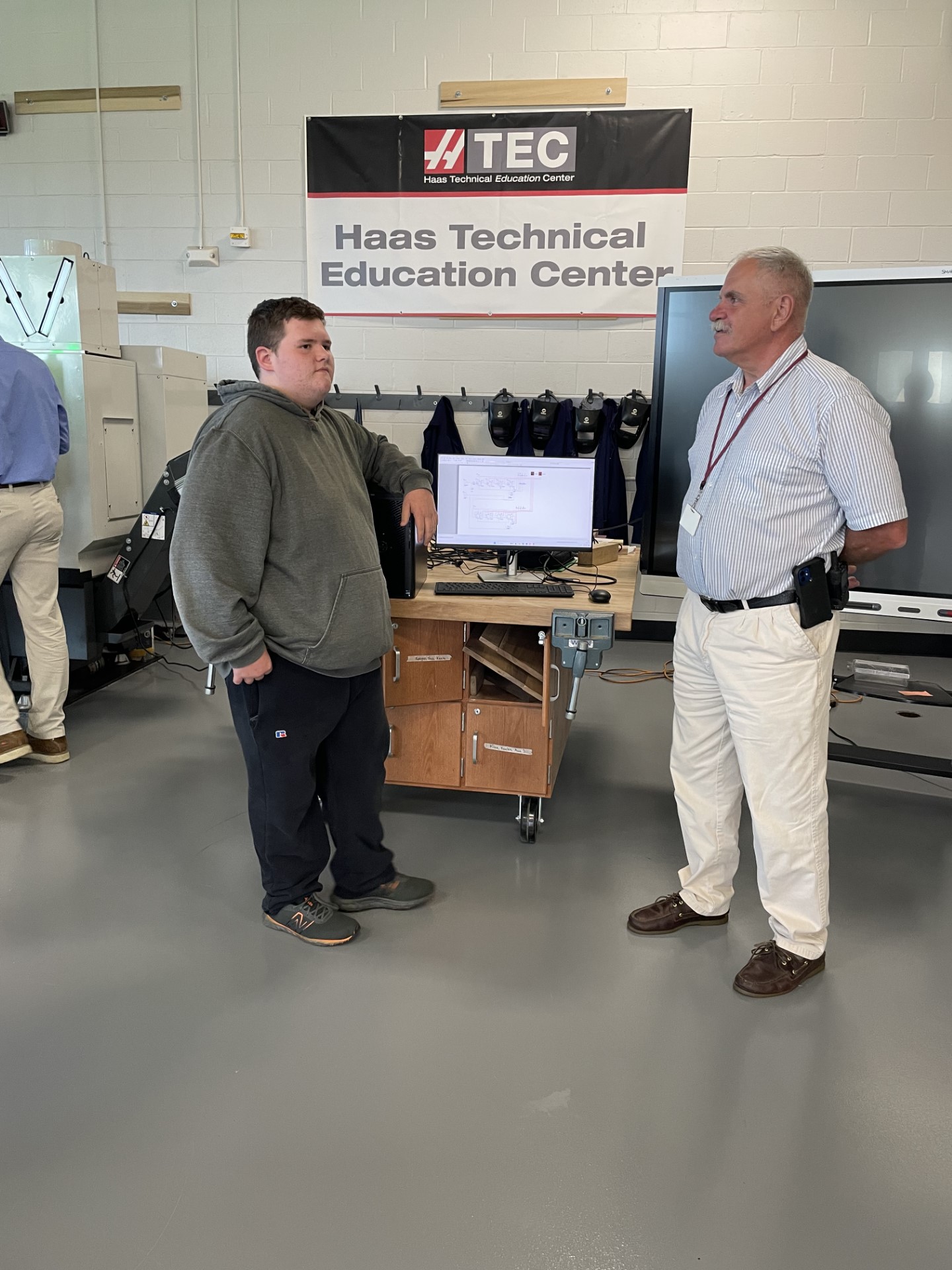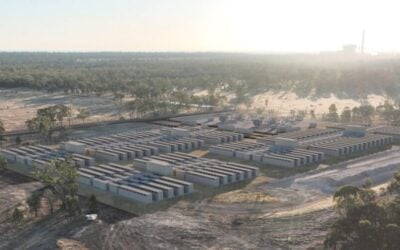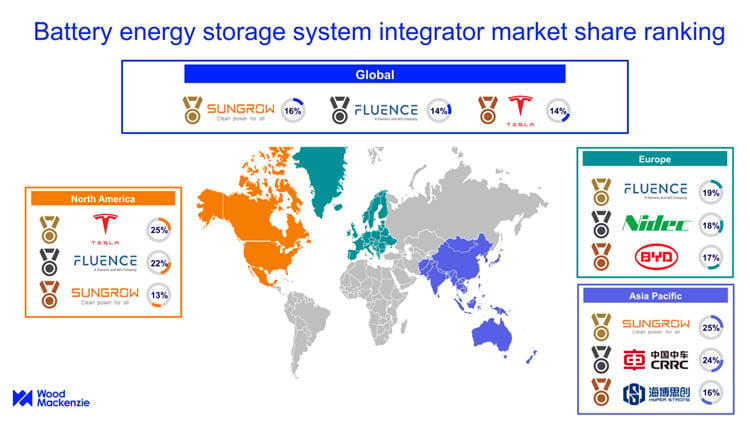
The trucks look like Chevy Silverado 5500 MDs but will run on the most abundant element in the universe.
By Andrew J. Hawkins, transportation editor with 10+ years of experience who covers EVs, public transportation, and aviation.
- General Motors (GM) will release a fleet of medium-duty trucks that run on hydrogen fuel cells as part of a pilot project sponsored by the US Department of Energy.
- The goal is to prove out the capabilities of hydrogen, the most abundant element in the universe, as a viable alternative to diesel vehicles.
- “We will design, engineer, and develop a fleet of hydrogen fuel-cell medium-duty trucks,” said Jacob Lozier, project lead at GM, “to demonstrate how the capability and strength of our fuel cells can help real-world fleet customers.”
- The trucks’ development will receive funds from DOE’s SuperTruck program, which aims to reduce carbon emissions among heavy- and medium-duty vehicles.
- The total project will cost $65 million, with $26 million coming from DOE, and GM and its partners providing the rest.
- The trucks will share an exterior design with today’s Chevy Silverado 5500 medium-duty trucks. But under the hood, they will run on hydrogen fuel cells developed by GM’s Hydrotec division.
- GM is also working on other hydrogen-related projects, including mobile power generators, cement mixers, and heavy-duty vehicles. GM has a joint venture with Honda to develop hydrogen fuel cells for a variety of products.
- GM will deliver the fuel cell trucks to Southern Company, an Atlanta-based gas and electricity utility, for use as shop vehicles for its worksites. The automaker also envisions the trucks being used for farming operations and municipal services.
- GM will work with Nel ASA, using the Norwegian company’s PEM Electrolyzer in an effort to create hydrogen more sustainably.
- Hydrogen fuel cells use compressed hydrogen as their fuel, releasing water vapor as its only emission. Automakers are increasingly using this technology for heavy-duty vehicles and mobile power generators as a way to transition away from polluting gas-powered vehicles and meet their own climate goals.
- The main hurdle for hydrogen is the near-total absence of refueling infrastructure in the US. There are only 55 hydrogen stations in California, according to Hydrogen Fuel Cell Partnership. Refueling can also be expensive, with the Department of Energy estimating costs upwards of $90 per vehicle.
- GM is committed to cleaner methods of hydrogen production when they are available.
SDGs, Targets, and Indicators
-
SDG 7: Affordable and Clean Energy
- Target 7.2: Increase substantially the share of renewable energy in the global energy mix
- Indicator 7.2.1: Renewable energy share in the total final energy consumption
-
SDG 9: Industry, Innovation, and Infrastructure
- Target 9.4: Upgrade infrastructure and retrofit industries to make them sustainable
- Indicator 9.4.1: CO2 emission per unit of value added
-
SDG 11: Sustainable Cities and Communities
- Target 11.6: Reduce the adverse per capita environmental impact of cities
- Indicator 11.6.1: Annual mean levels of fine particulate matter (e.g. PM2.5) in cities
-
SDG 13: Climate Action
- Target 13.2: Integrate climate change measures into national policies, strategies, and planning
- Indicator 13.2.1: Number of countries that have communicated the strengthening of institutional, systemic, and individual capacity-building to implement adaptation, mitigation, and technology transfer
Table: SDGs, Targets, and Indicators
| SDGs | Targets | Indicators |
|---|---|---|
| SDG 7: Affordable and Clean Energy | Target 7.2: Increase substantially the share of renewable energy in the global energy mix | Indicator 7.2.1: Renewable energy share in the total final energy consumption |
| SDG 9: Industry, Innovation, and Infrastructure | Target 9.4: Upgrade infrastructure and retrofit industries to make them sustainable | Indicator 9.4.1: CO2 emission per unit of value added |
| SDG 11: Sustainable Cities and Communities | Target 11.6: Reduce the adverse per capita environmental impact of cities | Indicator 11.6.1: Annual mean levels of fine particulate matter (e.g. PM2.5) in cities |
| SDG 13: Climate Action | Target 13.2: Integrate climate change measures into national policies, strategies, and planning | Indicator 13.2.1: Number of countries that have communicated the strengthening of institutional, systemic, and individual capacity-building to implement adaptation, mitigation, and technology transfer |
Analysis:
-
SDG 7: Affordable and Clean Energy
The article discusses the use of hydrogen fuel cells as an alternative to diesel vehicles, aiming to prove the capabilities of hydrogen as a viable alternative. This aligns with SDG 7, which focuses on affordable and clean energy.
The specific target under SDG 7 that can be identified is Target 7.2: Increase substantially the share of renewable energy in the global energy mix. Hydrogen fuel cells, which use hydrogen as their fuel, can be considered a form of renewable energy.
The indicator mentioned in the article that can be used to measure progress towards this target is Indicator 7.2.1: Renewable energy share in the total final energy consumption. By tracking the share of renewable energy, specifically hydrogen fuel cells, in the total energy consumption, progress towards the target can be measured.
-
SDG 9: Industry, Innovation, and Infrastructure
The article mentions the development of medium-duty trucks running on hydrogen fuel cells as part of a pilot project sponsored by the US Department of Energy. This relates to SDG 9, which focuses on industry, innovation, and infrastructure.
The specific target under SDG 9 that can be identified is Target 9.4: Upgrade infrastructure and retrofit industries to make them sustainable. The development of hydrogen fuel cell trucks represents an upgrade in infrastructure and a retrofitting of the transportation industry to make it more sustainable.
The indicator mentioned in the article that can be used to measure progress towards this target is Indicator 9.4.1: CO2 emission per unit of value added. By comparing the CO2 emissions per unit of value added before and after the implementation of hydrogen fuel cell trucks, progress towards the target can be assessed.
-
SDG 11: Sustainable Cities and Communities
The article mentions that the hydrogen fuel cell trucks will be used for farming operations and municipal services, indicating their potential impact on cities and communities. This relates to SDG 11, which focuses on sustainable cities and communities.
The specific target under SDG 11 that can be identified is Target 11.6: Reduce the adverse per capita environmental impact of cities. By introducing hydrogen fuel cell trucks, which have lower emissions compared to diesel vehicles, the adverse environmental impact of cities can be reduced.
The indicator mentioned in the article that can be used to measure progress towards this target is Indicator 11.6.1: Annual mean levels of fine particulate matter (e.g. PM2.5) in cities. By monitoring the levels of fine particulate matter in cities before and after the implementation of hydrogen fuel cell trucks, progress towards the target can be evaluated.
-
SDG 13: Climate Action
The article highlights the use of hydrogen fuel cells as a way to transition away from polluting gas-powered vehicles and meet climate goals. This aligns with SDG 13, which focuses on climate action.
The specific target under SDG 13 that can be identified is Target 13.2: Integrate climate change measures into national policies, strategies, and planning. By integrating the use
Behold! This splendid article springs forth from the wellspring of knowledge, shaped by a wondrous proprietary AI technology that delved into a vast ocean of data, illuminating the path towards the Sustainable Development Goals. Remember that all rights are reserved by SDG Investors LLC, empowering us to champion progress together.
Source: theverge.com

Join us, as fellow seekers of change, on a transformative journey at https://sdgtalks.ai/welcome, where you can become a member and actively contribute to shaping a brighter future.






